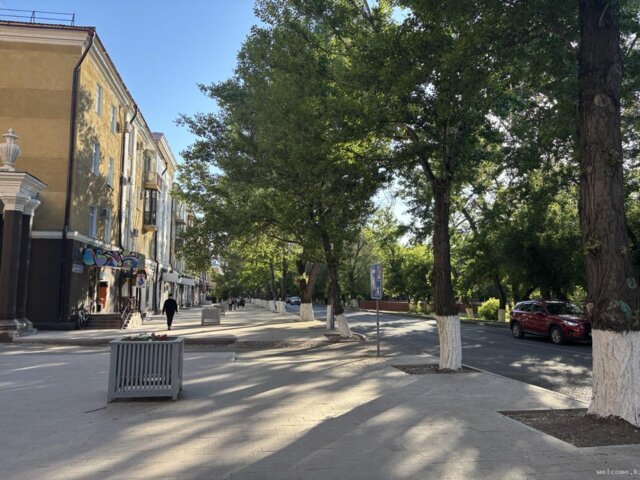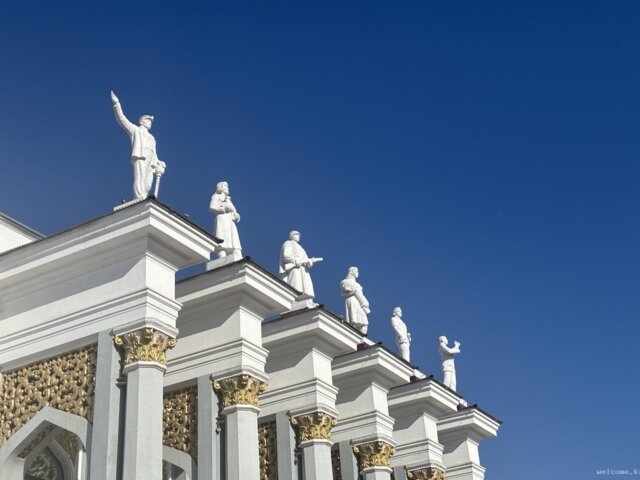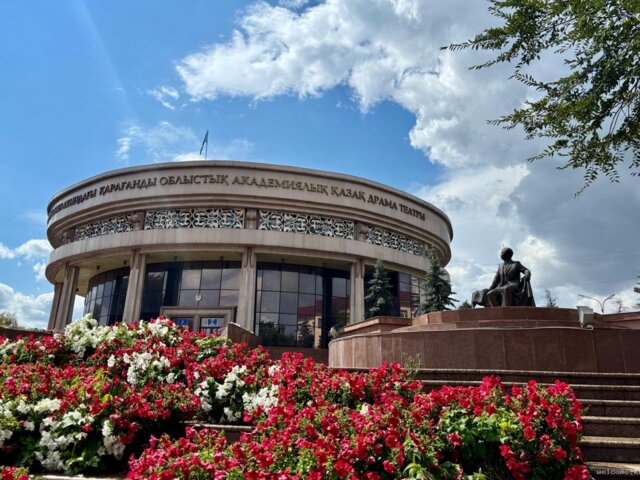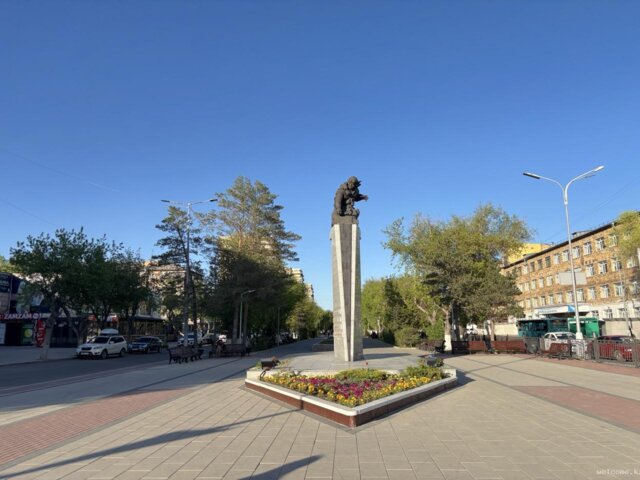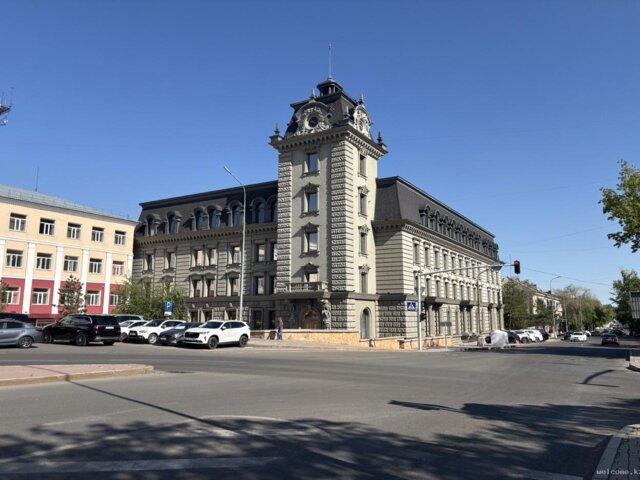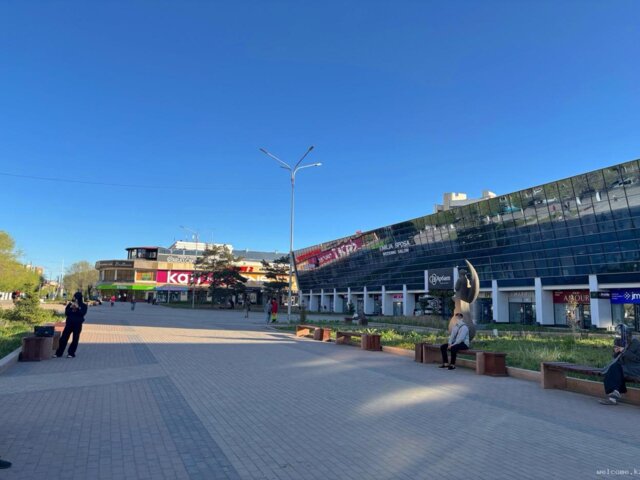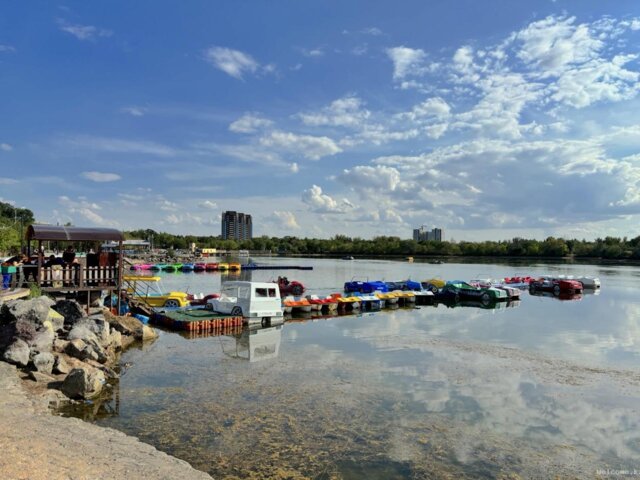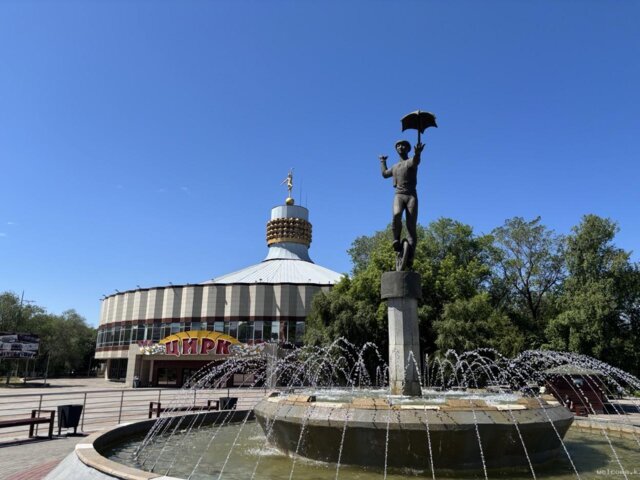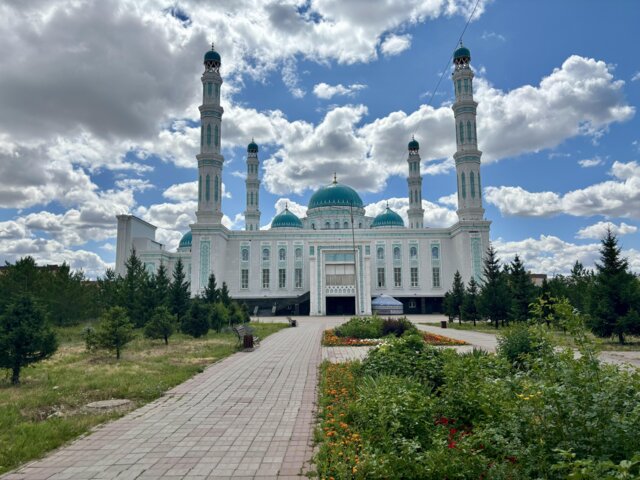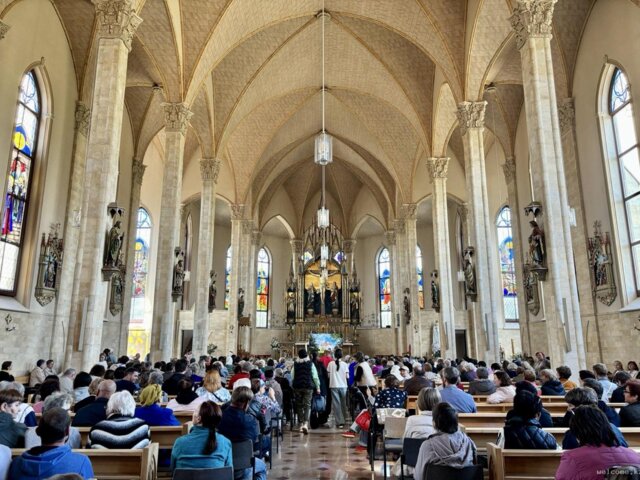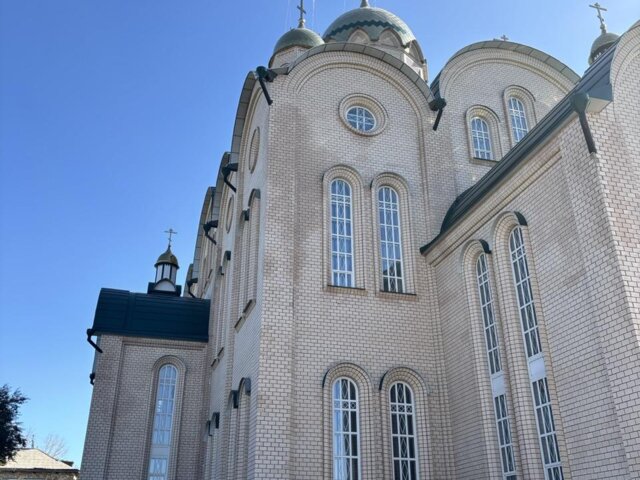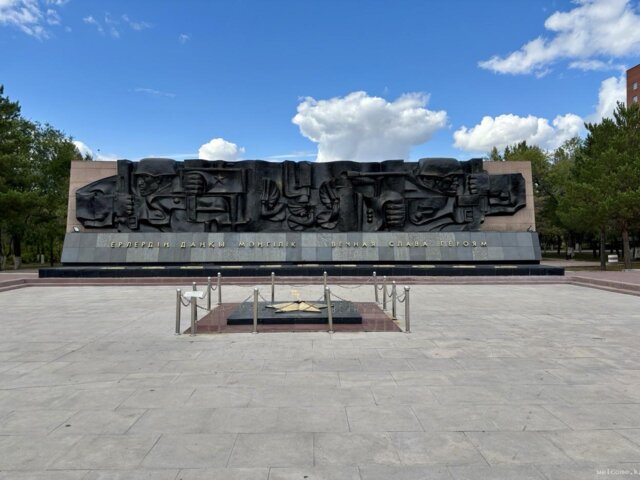A Guide to Must-Visit Attractions in Karaganda
Karaganda’s story began with Stalin’s labor camps, coal mines, and a bold dream that a thriving city could rise in the middle of the Kazakh steppes. Nearly a century later, Karaganda has seen it all: the industrial boom, repressions, and the sweeping winds of change. Today, Karaganda is much more than mines. It’s a city where culture, art, memories of the past, and the energy of the future collide. It teaches you to find beauty in the simple things: in the cozy avenues, the slow, thoughtful walks under the trees. In this guide, we’ll show you not just where to go, but how to feel the soul of Karaganda so the city stays with you long after you leave.
Karaganda is loosely divided into several districts: the Center, South-East, Maikuduk, Prishakhtinsk, Mikhailovka, and Sortirovka. Most of the must-see spots are packed into the Center and South-East. If you're coming to explore, these two areas are your best bet for staying close to the action.
Maikuduk, by the way, is the hometown of boxing legend Gennady Golovkin. Sure, it had a bit of a rough reputation in the '90s, but today it’s peaceful, safe, and even charming in its own way. Mikhailovka, just beyond Central Park, is a quiet residential neighborhood – good for living, not so much for sightseeing. As for Prishakhtinsk and Sortirovka, they’re the city’s farthest-flung districts. Unless you have a specific reason, there’s no real need to venture out that far.
In the city center, the main arteries are Bukhar-Jyrau Avenue, Nurken Abdirov Avenue, and Nursultan Nazarbayev Avenue (formerly known as Mir Avenue). Here, you’ll find a concentration of landmarks, cozy cafés, leafy alleys, and monuments. Nazarbayev Avenue, especially, is one of the city’s greenest, most walkable streets.
The Karaganda railway station sits right in the heart of town. If you’re passing through and have even just a couple of hours to spare, get out and explore. The center is compact, and the best sights are just a few steps away.
Parks and Promenades
Karaganda Central Park is the city’s green heart and it beats strong. One of the largest parks in Kazakhstan, it stretches over two kilometers (about 1.2 miles). At its center lies a large lake where, come summer, people take to the water in boats and motorboats. All around the lake, you’ll find rides, shooting galleries, ice cream stands, cotton candy, and other sweet echoes of childhood.
One of the park’s main alleys pays tribute to Shakhter FC, Karaganda’s football club. There stands a monumental soccer ball as a landmark. This Shakhter Alley leads you straight to the Cascade of Fountains, facing the grand Independence Square and Stele. This is where the city comes alive: concerts, festivals, fireworks. And when New Year’s rolls around, it transforms into a wonderland of lights, garlands, and sparkling ice sculptures.
And then there’s the Children’s Railway. Recently, it got enchanted into a branch of Hogwarts itself! There, you’ll stumble into a full-on Harry Potter mini-world. The train is now the Hogwarts Express. The station boasts banners of Gryffindor, Slytherin, Hufflepuff, and Ravenclaw. Wander a little further and you’ll find Hagrid’s hut, the dragon from the Triwizard Tournament, the bewitched Ford Anglia, and even lurking Dementors – better have your Patronus ready. The Hogwarts Express departs every hour from 12:00 p.m. to 6:00 p.m. on Thursdays and Fridays, and from 11:00 a.m. to 6:00 p.m. on weekends and holidays.
Bonus trivia for space fans: the railway runs past the Chaika Hotel, where Valentina Tereshkova (the first woman in space) stayed after her historic 1963 flight. "Chaika" ("Seagull") was her call sign during the mission, and the hotel proudly carries her name to this day.

Karaganda’s parks also preserve the memory of the city's most difficult chapters. In Central Park, you'll find the Monument to the Miners. Nearby stands a newer and more personal memorial: a monument to the 46 miners who tragically lost their lives in the Kostenko mine accident on October 28, 2023.
Karaganda also boasts the Zoo, one of only three zoos in all of Kazakhstan. It opened its gates back in 1938 and became known across the USSR thanks to Batyr, the talking elephant who could “speak” around 20 words and phrases. Batyr passed away in 1993 at the age of 24, reportedly due to the poor conditions of the zoo. Today, the zoo has improved with renovated enclosures and expanded spaces. Although it’s still a few steps behind global standards.
Over in the South-East district, you'll find Ethnopark – a green, spacious park opened in 2001. At its heart stands the stunning Anet Baba Mosque, the largest in Karaganda. Wander westward to where Bukhar-Jyrau Avenue meets University Street, and you’ll spot Suyunshi, a beautiful sculptural composition. In Kazakh tradition, "suyunshi" means "good news," and fittingly, the monument features a horseman racing to deliver joyful tidings. It’s a favorite spot for newlyweds, complete with the Mendelssohn wedding march often playing in the background.
Not far from Ethnopark is Victory Park, home to memorials honoring soldiers of World War II, veterans of the Afghan War, and liquidators of the Chernobyl disaster. Interesting detail: Karaganda’s Eternal Flame, a common feature in post-Soviet WWII memorials, isn’t located here but behind the Museum of Local History.
In Maikuduk, you'll find the Park of the 50th Anniversary of Kazakhstan – usually just called Maikuduk Park by locals. It’s perfect for a casual walk, especially with the nearby Sary Arka Cinema if you feel like rounding off your stroll with a movie.
If you're wandering the city center, don’t miss Shalkyma Park. Here you’ll find a monument to Abai Kunanbayev, the great Kazakh poet, and a monument to Yuri Gagarin, the first human in space. Right beside it lies Cosmonauts’ Square, a proud nod to Karaganda’s cosmic ties. After all, spacecraft from the Baikonur Cosmodrome often landed near the city, earning Karaganda the unofficial title of "Space Harbour."
And just a few steps away is the stylish Dokhodny Dom Business Center (20 Erubaev Street), a favorite backdrop for Instagram photoshoots.
Museums
Start your journey into the past with a visit to the Local History Museum (38 Erubaev Street). It offers a deep dive into the region’s past: from the first settlements to Stalin’s labor camps, and even dinosaur bones. The exhibition covers a wide range of topics, making it the perfect place to begin understanding Karaganda’s history.
Not far from the railway station, nestled in the heart of the city, you’ll find the Karaganda Museum of Fine Arts (76 Bukhar-Jyrau Ave.). The museum presents a collection of works by Kazakhstani artists, spanning everything from realism to modern decorative art. The rotating exhibitions include everything from graphics and painting to sculpture and handicrafts.
For those interested in the environment and the region’s history with industry, head to the Museum of Ecology (47 Bukhar-Jyrau Ave.), located near the Cascade of Fountains in Central Park. Here, you’ll find Soviet-era equipment, aircraft, and military hardware, including one of the most jaw-dropping exhibits: a real booster block from the Proton launch vehicle, which once fell right into the garden of a local resident. The museum also covers the Semipalatinsk test site and the consequences of nuclear testing.
Over in Maikuduk, you’ll find what might just be the most unusual museum in Karaganda – the Mine Museum. Here, you can descend into a mock mine about 8 meters (26 feet) deep. While it’s not an actual working mine, the experience is incredibly realistic, complete with mining equipment, helmets, and ladders. Located within the Karaganda Mining and Industrial College (24 k1 Magnitogorskaya St.), the museum primarily caters to students but is open to the public through organized tours. You’ll need to sign up through local tour operators to visit. While you’re in the area, don’t miss the Maikuduk House of Culture right across the street. Built in 1954, it stands as one of the last remaining examples of Stalinist Empire architecture in the city.
Theaters and concert venues
If you’re craving drama, music, and a glimpse of Soviet architecture, Karaganda’s theaters are the place to be.
Start your cultural journey at the Stanislavsky Russian Drama Theater, the city’s oldest theater. It continues to offer a diverse mix of classic plays and modern works. While the performances have evolved, the theater maintains its timeless charm and connection to Karaganda's artistic history. This theater always stages plays in Russian.
For fans of Kazakh drama, the Saken Seifullin Kazakh Drama Theater offers another rich experience. It originally shared a space with the Stanislavsky Theater but it eventually moved to its new home on Bukhar-Jyrau Avenue in 2008. The new building was constructed on the site of the Summer Theater, a structure built by Japanese POWs in the 1940s. The demolition of the original Summer Theater caused a public uproar, and the city even saw courtroom drama unfold. Fortunately, the space was transformed not into another mall but into a modern, purpose-built theater.

Across from the main entrance to Central Park, you’ll find the Miners’ Palace of Culture, a monumental building that dates back to the late 1940s. It’s a prime example of the grand, enduring architecture of the Soviet era. The building’s portico is adorned with six sculptures, each representing a key figure in Kazakhstan’s labor force: a miner, shepherd, soldier, collective farmer, engineer, and akyn (a Kazakh poet). Inside, you’ll also find the Karaganda Theater of Musical Comedy, where you can enjoy operettas and musicals.
Just a short walk from Central Park, the Karaganda Circus is another local gem. In 2004, a four-meter sculpture of a girl balancing on a ball was placed on the roof – a controversial design that sparked concern among architects over both aesthetics and stability. At the entrance, visitors are greeted by a sculpture of an acrobat, setting the stage for the thrilling performances inside.
Shopping malls and bazaars
The oldest operating shopping mall in the city is TSUM, located near Central Park, right by the bus stop of the same name. In the vicinity, you’ll find a variety of other malls: Arbat, Absolute, and ASIA, with Abzal shopping center just across the road. If you’re looking for international brands, City Mall is the go-to destination. It’s one of the most popular spots among Karaganda residents.
The largest bazaar in Karaganda is Altyn Arba, though locals still call it the New Bazaar. It was new when arcade games and mullets were in their prime but the name is still in use. It’s the place to find clothes, building materials, and all sorts of odds and ends. For fruits and vegetables, head over to the Shygys Market, right next door to Altyn Arba. It's a great spot for bargain hunters.
Opposite the Altyn Arba market, you’ll find the massive Tair Shopping Center, a labyrinth of boutiques where it’s easy to lose track of time while shopping.
Another notable shopping venue is Global City, located on the highway between the South-East and Maikuduk districts. It’s brand-new, modern, and spacious, complete with a large parking lot. Perfect for those looking for a comfortable, hassle-free shopping experience.
Mosques, churches and other religious sites
In Karaganda, spiritual life flows quietly, with a deep respect for every faith. Mosques, churches, and gathering places stand side by side, reflecting the city's rich diversity and the people's enduring reverence for their traditions.
The Anet Baba Mosque, often referred to as the Central Mosque, is the most prominent in the city. Located in the Ethnopark, this mosque stands out with its stunning architecture. It’s spacious, light-filled, and an integral part of Karaganda’s skyline.
Another significant mosque is the Al-Mashani Mosque (1a Nurzhanov St.), smaller in size but equally respected by the local Muslim community.
The Church of the Presentation of the Blessed Virgin Mary (1a Gapeyev St.) is the largest Orthodox church in Karaganda and one of the largest in Kazakhstan.
A short distance from Central Park is the Church of Saints Peter and Paul (47a Yerzhanov St.), a modest place to pause and reflect amidst the hustle and bustle of the city.
Karaganda is also home to many Orthodox churches scattered across the city:
- In Maikuduk: The Church of the Exaltation of the Cross (2 Karl Marx St.)
- In Prishakhtinsk: The Cathedral of the Archangel Michael (43 Ushakov St.)
- In Mikhaylovka: The Holy Trinity Sebastian Cathedral (29 Novaya St.). Nearby is a monument dedicated to the victims of 20th-century political repressions.

A true gem of Karaganda is the Cathedral of Our Lady of Fatima, the largest Catholic cathedral in Central Asia. This magnificent building also houses the largest organ in Kazakhstan. The cathedral regularly hosts concerts and invites talented organists from around the world. Stay updated on events through their Instagram: @organ_krg. The cathedral is located at 32 Shakhtyorov Avenue.
Karaganda also boasts three other Catholic churches:
- In Maikuduk: The Roman Catholic Parish of St. Joseph (24 Yntymak St.)
- In Prishakhtinsk: The Parish of the Exaltation of the Holy Cross (33 Lunacharsky St.)
- The Greek Catholic Church of the Intercession of the Holy Mother of God (1 Pishchevaya St.)
Stadiums and sports grounds
The beating heart of football in Karaganda is Shakhter Stadium (1 Kazakhstanskaya St.). It’s the home turf of FC Shakhter – the same team that once pulled off a historic win against Celtic in the Champions League.
In the very center of the city stands the Nurken Abdirov Sports Palace (53 Bukhar-Jyrau Avenue) – an architectural landmark and a favorite for athletes. Inside, you’ll find the city’s largest swimming pool.
The real sports powerhouse, however, is in the South-East. There is a whole cluster of arenas:
- Karaganda Arena (13 Respublika Avenue) – a sleek ice palace hosting hockey games, figure skating competitions, and open public skating sessions.
- Right next door is Doszhan Sport Complex (15/3 Respublika Avenue), an indoor skating rink that’s especially popular with families and young skaters in training.
- Cross the street and you’ll find the Tennis Center (11/1 Respublika Avenue) and the Serik Sapiyev Boxing Center (11/3 Respublika Avenue), named after Karaganda’s own Olympic boxing legend.
Monuments and Urban Art
If Karaganda had a mascot, it would be Miner’s Glory – the monument of two miners lifting a chunk of coal. This sculpture stands right by the main entrance to Central Park on Bukhar-Jyrau Avenue and feels almost like the city’s unofficial coat of arms.
Opposite the Sports Palace, you'll find the monument to Nurken Abdirov – a WWII pilot who heroically crashed his damaged plane into a column of German tanks. Flying with him was Sergeant Alexander Komissarov, whose namesake street runs parallel to Nurken Abdirov Avenue.
Near Shakhter Stadium, on Tolepov Street, you’ll stumble upon a tribute to Viktor Tsoi, the rock legend and leader of Kino. True fans should also swing by the bar Перемен! – just a few meters away. It’s less of a bar and more like a living fan museum, with interiors that seem to have time-traveled straight from the late ‘80s.
Near the Karaganda Technical University stands perhaps the most debated piece of public art: the Filmstrip Monument. Officially, it’s supposed to symbolize cinema. Unofficially, it looks like leftover construction materials welded together. While you’re here, walk a bit further to the Lenin Movie Theater (long closed). Behind it, you'll find the largest Vladimir Lenin monument in Kazakhstan. Once the proud centerpiece of the city, now it feels more like he's been sent to a quiet retirement home. Fun fact: it’s the largest Lenin statue in Kazakhstan, and truth be told, it’s pretty impressive, especially when compared to its ugly neighbor, the Filmstrip.
At the railway station square, you’ll spot the statue of Kanysh Satpayev – a renowned geologist who discovered major copper deposits in Kazakhstan. There’s even a whole city named after him.
In Russian, there is a saying "Где? Где? В Караганде!" (pronounced Gdye? Gdye? V Karagandé!) is a playful, teasing phrase that literally means: "Where? Where? In Karaganda!" Originally, it's a joke or stalling response when someone asks "Where?" and you either don't know, don't want to say, or just feel like being cheeky. The phrase became so widely used that in Karaganda, there is an actual monument to it.

Karaganda is slowly but steadily turning into an open-air gallery: from portraits of miners to bold experiments with abstraction. If you're up for an unusual stroll, start a mural hunt. It's a lot more fun than it sounds.
To the left of the Nurken Abdirov monument, you'll spot a mural of gamekeeper Nurlan Yergaliyev cradling a saiga cub. It’s a tribute to a man who lost his life protecting wildlife from poachers.
On the wall of house #18 on Mukanov Street, there’s a familiar sight – the Miner’s Glory monument, but in mural form.
Near Karaganda State University in the South-East, things get a little more eclectic. There, you will see a triptych mural. One mashes together "Kazakh Waltz" with Gustav Klimt’s "The Kiss." Another one combines Hokusai’s "Great Wave off Kanagawa" with Van Gogh’s "Starry Night", while the third one fuses Valentin Serov’s "Girl with Peaches" with Warhol’s soup cans plus Cattelan’s banana taped to the wall, because why not.
Over at 2 Magnitogorskaya Street, Gennady Golovkin throws a knockout look from a mural. If you're visiting the Mine Museum, it's just a short walk.
At 15 Nazarbayev Avenue, next to the Stanislavsky Theater, a cat lounges across the wall, presumably judging passersby.
And that’s just scratching the surface. In Karaganda, bright splashes of color pop up where yesterday there were only Soviet shades of gray. Sometimes all it takes is a giant wall cat or a surreal sunset mural to make your day a bit better.
This wraps up our guide to Karaganda, a city that doesn't dress up for tourists or try to sell you a postcard-perfect image. But if you slow down, stay a little longer, and actually look, you’ll find more soul here than in a dozen polished "must-see" capitals.
When planning your trip, mix the known spots with the backstreet discoveries. It’s often the unplanned turns that leave the strongest memories.

